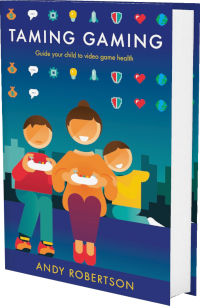 Android
Android iOS
iOS Mac
Mac Switch
Switch Wii
Wii Wii U
Wii U PC
PC PS4
PS4 PS5
PS5 Xbox One
Xbox One Xbox X|S
Xbox X|SWe've documented 37 accessibility features for Stray Gods: The Roleplaying Musical, including Fully Voiced (Or No Speech), Environmental Captions, Large Subtitles, Guaranteed Progress and Adjust Speed. Its accessibility is strongest in Controls and Getting Started but it also has features in Navigation, Visual, Reading and Audio to reduce unintended barriers.
This report is created with input from accessibility experts and the player community to help people find games that have the accessibility features they require. Once you have found potential games on the database, there are excellent specialist accessibility sites that offer in-depth reviews to guide your purchasing decisions.
External examiner, Meredith Hall, first checked Stray Gods: The Roleplaying Musical accessibility 9 months ago. It was re-examined by Andrew Robertson and updated 9 months ago.
 Accessibility Notes
Accessibility Notes
You can turn off the Timed Choice element of the songs. Rather than being under pressure to choose the direction of the song, it pauses until you make your choice. You can also rewind back to previous scenes and make different choices - if you do this you are warned which means you lose subsequent choices from that point onwards. It's a useful feature to reduce pressure, but some care is required.
The Closed Caption option provides a textual description and audio Narration of important visual elements on screen that are critical to the story. This is currently just a descriptive audio track, rather than full closed captions. This is only available in English.
There is a journal in the game that updates after each interaction with context about each character and their background. This means there's always a list to refer to with names/context.
 Game Details
Game Details
Release Date: 10/08/2023
Out Now: PC, PS4, PS5, Switch, Xbox One and Xbox X|S
Skill Rating: 10+ year-olds
Players: 1
Genres: Communication, Narrative, Role-Play (Adventure and Rhythm)
Accessibility: 37 features
Developer: Summer Fall Games (@SummerFallGames)
Costs: Purchase cost
 Controls
Controls
We've documented 12 accessibility features for Controls in Stray Gods: The Roleplaying Musical which deal with how you control the game, different options for alternative inputs and whether you can remap these settings to suit your needs.
Gamepad
Can play with the following:
1 Button & Single Stick: Can play with button and stick.
Multiple Buttons & Single Stick: Can play with multiple buttons and a stick.
Mouse And Keyboard
Can play with the following:
Mouse Alone: Can play with just the mouse/mouse-button/mouse wheel.
Mouse and Keys: Can play with mouse and multiple keys.
Remap Controls
Can customise the controls for the game as follows:
Remap Buttons: Can re-map all buttons so that you can use alternatives that better suit your play.
Remap Mouse and Keyboard: Can remap mouse and keyboard key bindings, on systems that support these controls.
Remap Extra Mouse Buttons: Can remap additional buttons on mice that provide more than the two standard buttons, on systems that support these controls.
Remap Game Menu Access: Can remap buttons to pause, access and navigate the game menu. This enables you to specify which buttons pop-up the game menu.Whether you can remap menu navigation buttons isn't considered here.
Button Combinations
Specific button operation required to play
Holding Down Buttons Optional: Holding down buttons for prolonged periods (a second or more) is not required or can be switched to toggling the action on and off. This is in addition to the movement stick/button which is not considered a hold for this purpose.
Rapid Repeated Pressing Optional: Quick, repeated button pressing (more than 2 times a second) is not required, can be skipped or switched to holding a button to trigger a repeated action.
No Simultaneous Buttons: Only one button or key required at a time, in addition to direction stick(s).
Controller Vibration
Vibration Optional: Controller vibration not used in the game or you can disable it.
 Difficulty
Difficulty
We haven’t documented any accessibility features for Difficulty in Stray Gods: The Roleplaying Musical which deal with how you can adjust the challenge of play, and whether this is locked once chosen or can be adjusted as you play. The following games are similar to Stray Gods: The Roleplaying Musical, and offer accessibility features for Difficulty:
- Rainbow Billy (3 Difficulty Features)
- A Musical Story (2 Difficulty Features)
- Hades (2 Difficulty Features)
- Pyre (1 Difficulty Feature)
 Getting Started
Getting Started
We've documented 8 accessibility features for Getting Started in Stray Gods: The Roleplaying Musical which deal with what support is offered to get started with the game. This includes customising the experience when you first open the game via any onboarding processes it provides as well as tutorials and other assistance when you first start playing.
Assistance Getting Starting
These features aid your play of the game in terms of cognitive load on learning controls, dealing with pressure and coping with the environment and challenges.
Reaction-Time Not Critical: Individual game actions don’t need quick reactions, or there are settings to lower the requirement for quick reactions. This means you don't need to quickly press a button in response to an on-screen prompt, target a fast-moving target or skillfully complete a scenario against the clock.
Low Pressure: Game tasks aren't time-limited or there's a low-pressure mode. This avoids the pressure of being put on the clock for overarching missions, or failing tasks because you didn't reach a destination in time.
Adjust Speed: Adjust the speed of the game at critical moments or throughout, or rewind play for a second attempt, to ease reaction times. By slowing the game, you have more time to interpret what is happening and then execute your actions. It also reduces the pressure on getting things right quickly or the first time you attempt them.
No Jump Scares: No sudden loud noises or popping-up scary visuals that unexpectedly appear without warning, or the option to disable them.
Assistance For Progressing
These features aid your progress through the game offering different ways of maintaining your progression.
Guaranteed Progress With God Mode: There is no fail state for any game level, where you lose progress or have to start again. Or there are options to make failing impossible: infinite health or lives, unlimited time. Sometimes called God Mode or Unfailable.
Bank Progress With Frequent Checkpoints: If you fail you can retry that level or aspect of the game without losing a lot of progress (less than 5 minutes). This is often provided via Frequent Checkpoints combined with restarting without losing time, equipment or score.
Assisted Recall for Characters: The game provides reminders about character identity during play. This includes pop-up images and bios for character who is speaking.
Save Progress Anytime: The game automatically saves progress or you can save any time. This doesn’t mean you never lose progress, but it does mean you can stop whenever you want (without having to get to a save point) without losing progress.
 Reading
Reading
We've documented 5 accessibility features for Reading in Stray Gods: The Roleplaying Musical which deal with how much reading or listening comprehension is required, how well the game provides visual and audible access to the text and whether subtitles and captions are a good fit for purpose.
Reading Level
How much reading is required to play the game's main path or story and how complex the language is. The presence of voiced characters doesn't reduce this requirement, as it's recorded as a separate datapoint.
Moderate Reading: Moderate reading required. The quantity and complexity of reading are at a level that a high school student (14-year-old) would appreciate.
Subtitles
Large Clear Subtitles: Subtitles are large, clear and of good contrast. They are at least 1/20 (46 pixels on 1080 screen) the height of a landscape screen and at least 1/40 height on portrait screens, or can be adjusted to be. We base this on the full line-height, including the space above and below the letters. Considered separately from the general text of the game, the subtitles are large, clear and of good contrast.
All Speech Subtitled (Or No Speech In Game): All spoken content has subtitles, or there is no speech in the game. This means there is no requirement to hear spoken dialogue or narrative to play the game.
Captions
Speaker Indicator, their Tone and Environment Sounds: Captions indicate who is speaking (or there is only ever one person speaking) and their tone, game sound and music. This can also be indicated visually in the game with character icons or character expressions with text in speech bubbles next to the person speaking. Environmental sounds are provided as extra text within the subtitles.
Voice Acted
All Dialogue is Voice Acted (Or No Speech In Game): All of the game dialogue and narrative can be voiced, or there is no speech in the game. This means there is no requirement to read the dialogue and narrative text to play the game.
Similar Games With More Accessibility Features for Reading
If you want to play Stray Gods: The Roleplaying Musical, but it doesn't offer the Reading accessibility features you require, these similar games extend the Reading accessibility:
- Harmonium: The Musical (7 Reading Features)
- The Artful Escape (7 Reading Features)
- A Musical Story (6 Reading Features)
- Goodbye Volcano High (6 Reading Features)
 Navigation
Navigation
We've documented 6 accessibility features for Navigation in Stray Gods: The Roleplaying Musical which deal with how the game provides guidance and assistance to navigate its worlds. These are only for games that have traversal and exploration in 2D and 3D spaces.
Clarity
Large Clear Navigation: The in-game navigation and maps are clear to read. They offer large text and offer markers that are large and of high contrast. Where text or information is small, there are settings to zoom-in and increase visibility.
Clear Mission Objectives: The game provides clear, structured missions with directional guidance and advice on which can be attempted next. This also indicates (ideally on maps where they are provided) which missions can't be attempted because you do not have the appropriate items yet.
Menu Navigation
Menu Audio Cues: Navigating menus provide an audio cue for each selection.
Menu Narrated: All of the game menus can be narrated for easier navigation. The game menus can therefore be navigated without reading text.
Menus Don't Wrap: Menus don't wrap and stop the cursor at the bottom of the list if you press down. Or menus do wrap but make it clear that you are back at the top of the list with sound or narration.
Remap Game Menu Access: Can remap buttons to pause, access and navigate the game menu. This enables you to specify which buttons pop-up the game menu.Whether you can remap menu navigation buttons isn't considered here.
Similar Games With More Accessibility Features for Navigation
If you want to play Stray Gods: The Roleplaying Musical, but it doesn't offer the Navigation accessibility features you require, this similar game extends the Navigation accessibility:
- Citizen Sleeper (7 Navigation Features)
 Visual
Visual
We've documented 6 accessibility features for Visual in Stray Gods: The Roleplaying Musical which deal with how you can adjust the visuals to suit your needs, and offer additional information if you can't hear the game.
Contrast
Medium Contrast: Game uses generally well contrasting and bright visuals, or has a slider to make this the case.
Audio Cues for Visual Events
Audio Cues for Visual Events: Audio is provided to indicate visual events. Game events or progress highlighted by visual icons, effects or animations are also accompanied by audio to signify that progress. This is useful for blind players.
Menu Audio Cues: Navigating menus provide an audio cue for each selection.
Narration for Visual Elements
This is the audible narration of in-game text. Sometimes talk about as Text To Speech, although it may include the narration of no-textual elements. This is different to Text To Voice, which provides player-player textual communication audibly.
Menu Narrated: All of the game menus can be narrated for easier navigation. The game menus can therefore be navigated without reading text.
Colour Options
Colour Blind Friendly: Game doesn’t rely on colour or can switch to colour blind friendly mode with double coding or similar way to avoid colour dependance.
Play Without Sight
Play Without Sight: The game can be played without sight. Positional/stereo sounds and haptic feedback enable play without the need to see the screen. This is useful for blind low-vision and sightless players.
Similar Games With More Accessibility Features for Visual
If you want to play Stray Gods: The Roleplaying Musical, but it doesn't offer the Visual accessibility features you require, these similar games extend the Visual accessibility:
- A Dance of Fire and Ice (8 Visual Features)
- One Hand Clapping (7 Visual Features)
- Rivals (7 Visual Features)
- Coffee Talk (7 Visual Features)
 Audio
Audio
We've documented 3 accessibility features for Audio in Stray Gods: The Roleplaying Musical which deal with how you can adjust the audio of the game and whether audio cues compensate for aspects of the game that are hard to see.
Adjustable Audio
Balance Audio Levels: Set music and game sound effects separately. This enables you to select your preference as well as ensure critical game sounds aren't obscured by other audio.
Audio Events
Visual Cues for Audio Events: Text or other visual indicators of audio events. This mirrors audio indicators of progress in the game with a corresponding visual indication.
Play Without Hearing
Play Without Hearing: No audio cues are necessary to play the game well.
System Accessibility Settings
In addition to the accessibility features provided in the game, you can also use system-wide accessibility settings:
Nintendo Switch
Nintendo Switch has some built-in features, including a lockable zoom, that can be used on all games.
PC
Windows has extensive accessibility features. Some, like colour correction, work with games. Lots of accessibility software can be used with PC games, from voice recognition to input device emulators.
PlayStation 4
PlayStation 4 has a range of accessibility settings. Some are system only, some work in games (invert colours and button mapping).
PlayStation 5
PlayStation 5 has a range of system-wide accessibility settings.
Xbox One
Xbox One has a system features, the excellent co-pilot share controls mode and adaptive controller support for all games.
Xbox Series X|S
Xbox One has a system features, the excellent co-pilot share controls mode and adaptive controller support for all games.
Read more about system accessibility settings.
Accessibility Report supported by VSC Rating Board, PlayabilityInitiative and accessibility contributors












